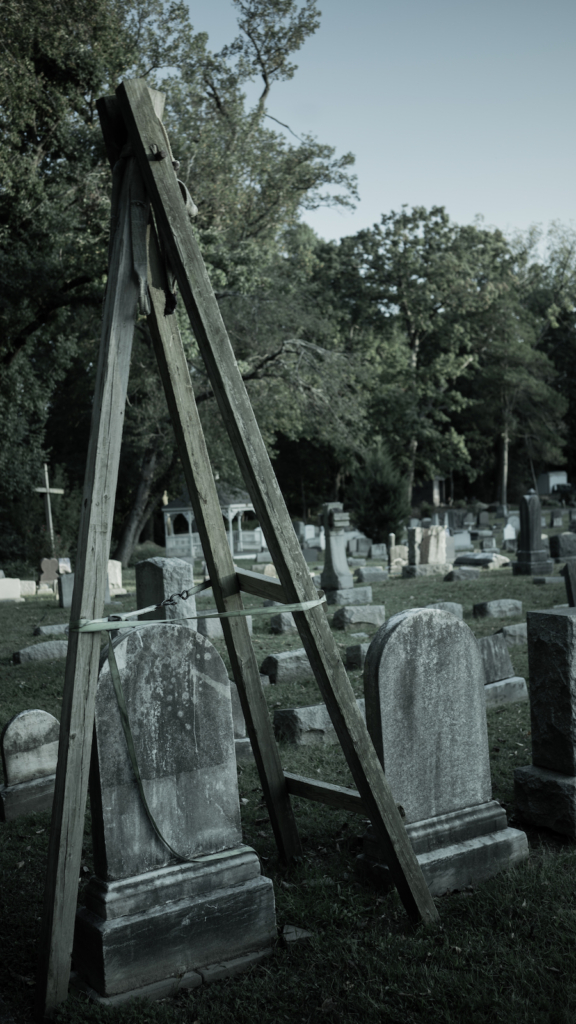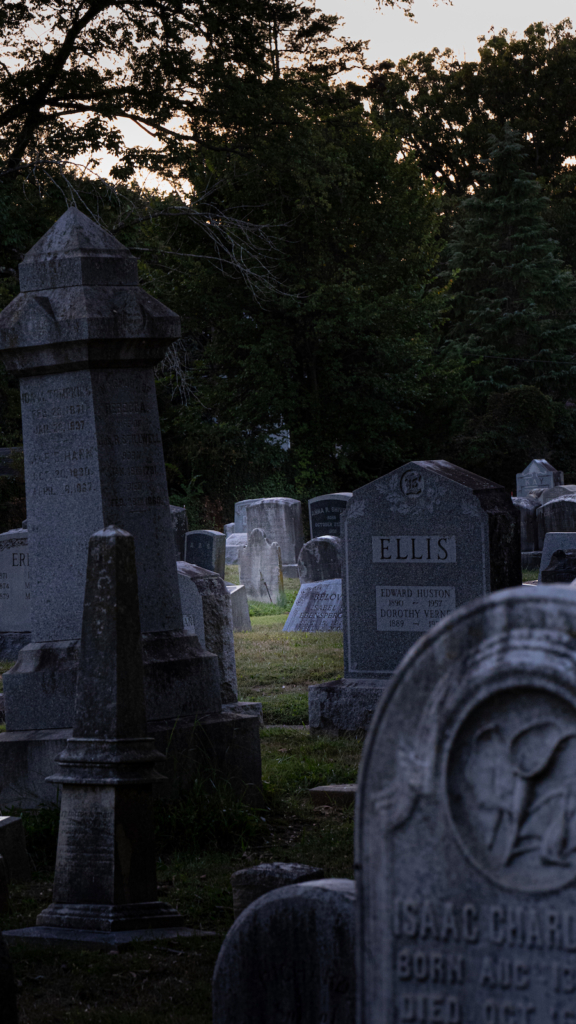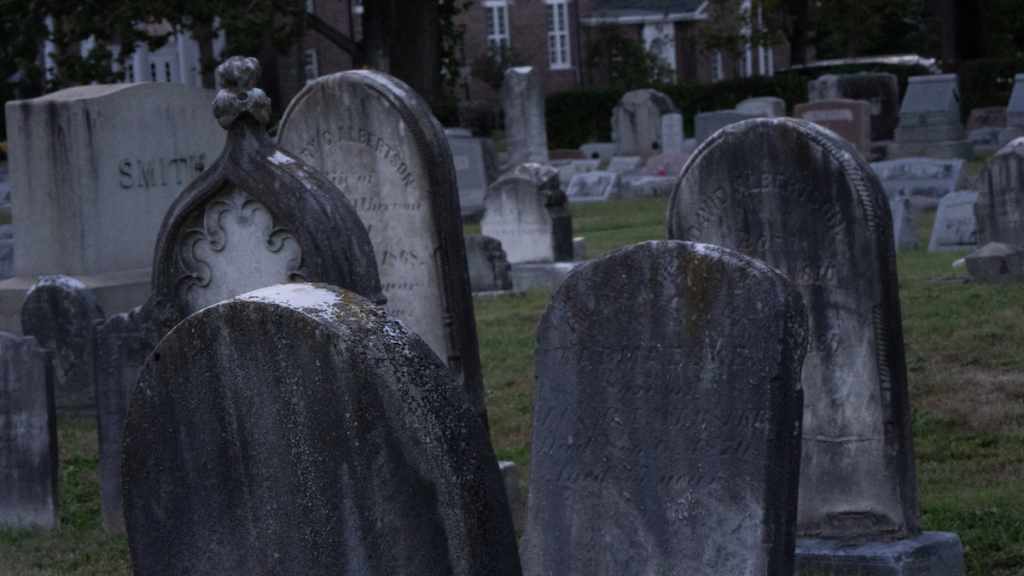“Who’s the little man in Mommy’s old room?”
That’s the question a 4-year-old girl once posed to her grandmother about the home where she once lived, and where she saw its first owner, Daniel Fortiner.
Built at 208 Kings Highway East in 1820, the home was moved by truck to a side street near Greenfield Hall in 1949 and restored by its new owners.
Fortiner was a blacksmith – he was also the village lamplighter.
Before electricity, a few blocks of Kings Highway East were lit by whale oil lamps mounted on posts. Fortiner’s job was to keep them filled and their wicks trimmed. Each night, he lit them at sundown and extinguished them at about 11 o’clock.
Fortiner had two daughters, Elizabeth and Martha, who both were sickened by pneumonia in 1838. Seven-year-old Martha survived, but Elizabeth died in their bedroom a few days shy of her 11th birthday.
Martha lived to care for her widowed father until he died at home in 1874.
During the 1950s, the new owners of the Fortiner house also had two girls. They, too, came down with pneumonia. At the time, they were about the same age Elizabeth and Martha were when they became sick.
Legend has it the girls were visited by Fortiner – as were the owners after that.
“Recently we had a visitor who was a descendant of (Fortiner)” shared Sarah Tambussi, the Historical Society of Haddonfield’s administrator. “We asked her, ‘Did you know about this story?’ She had no idea.
“She knew the house because her mom told her about it, but had no idea about the ghost stories.”
Fortiner’s story is one of about 20 that people learn about on the annual Haddonfield Haunted Walking Tours. The event is about an hour long and has been going on for more than 20 years.
“These tours are all about highlighting Haddonfield’s history,” Tambussi explained, adding that the events are held on three weekends in October to raise funds for the historical society.



“It’s a history tour,” Tambussi noted. “ … These are not scary people jumping out behind tombstones kind of thing. It is walking through the community and pointing out a house, a street or where somebody lived …
“There was a story about that person after they were deceased.”
William “Bill” Meehan, Jr., a long-time volunteer for the historical society, compiled the stories into two volumes of books, “Haunted Haddonfield.” The society published the first book in 2002 and the second in 2020.
“The sheer number of short stories that are in the books would fit into two hours,” Tambussi estimated. “We sort of cherry pick the stories we want to highlight.”
The society hired a tour guide for the last two years, an actor from the Haddonfield Plays & Players to deliver the stories.
“We, as an organization, we love these stories, but we are not so good with the projection,” Tambussi acknowledged. “The (actor) has helped a lot. We have a script they follow and we work with Betty (Willingmyre) – who is the cemetery administrator at the Baptist Church cemetery – and we put a little solar light in front of each grave.”
Each person on the tour gets headphones to follow along with the stories. One of the church’s grave diggers has a kerosene lantern he swings back and forth as tour-goers enter the cemetery.
“It’s an interesting perspective,” Tambussi noted of the kerosene lantern.
The Baptist Church cemetery has graves from the late 1700s to today. Most of the tour stories are about people who are buried there. One of them is Meehan, who died from a short battle with pancreatic cancer on Dec. 13, 2021.
“He wanted to be buried there,” Tambussi recalled, adding that Meehan’s daughter Lily, now 33, keeps in touch. “I go and get yellow flowers, Bill’s favorite color, and I put them on his grave (every year).
“When he originally started the tours, the money that was raised was split between us and the library,” he added. “Tickets were just $5 cash here and there. Then, as the library stepped away and we took it over, it got to be a little more involved.
“Not only was it a great fundraiser for us, but Bill would also add more stories.”
Meehan and his wife Kathy lived in Haddonfield for a long time with Lily. He had moved to Valley Forge, Pennsylvania, before he passed.
Meehan was a former bank trust officer and business owner, an author, historian, collector and recognized expert on American Art Deco industrial design, according to his obituary.
He was also a passionate fundraiser for the Historical Society of Haddonfield. His obituary noted his collection of historic ghost stories and legends and walking tours.
Other stories portrayed in the books include the Jersey Devil, first seen – it is said – in Haddonfield in 1859. Ten years passed, but during the week of Jan. 17, 1909, the creature was said to be seen by thousands all over the Delaware Valley.
Described as “jabberwock,” “kangaroo horse,” “flying death,” “kingowing,” “flying horse,” “cowbird,” “monster,” “flying hoof,” “prehistoric lizard” and “wozzlebug,” the Jersey Devil was seen flying, walking, eating trash and even attempting to make off with a small dog.
In Haddonfield, the devil left its tracks in snowy streets, backyards and on the roofs of outhouses.
Dr. Lawrence Glover and Fred Holloway, cement contractor and future mayor of Haddonfield, organized search parties on Jan. 20, 1909 to track down and capture the creature. They found many devil tracks, history says, but the trails always ended suddenly when the devil took flight.
The Jersey Devil was last reported near Hopkins Pond in the early 1970s; borough police investigated but found nothing. Yet some people still avoid the area, especially at night.
Probably the most interesting memorial in the Baptist Cemetery is to a man who isn’t buried there but was, as his monument notes, “Lost at Sea on SS (sic) Titanic.”
Frederick Sutton, whose Victorian mansion still stands on Warwick Road, had planned to be buried in the Baptist cemetery when his time came. An English-born Philadelphia coffee importer, he drowned or froze to death when the Titanic sank in the icy waters of the North Atlantic on April 15, 1912.
The historical society tour ends in the oldest part of Greenfield Hall, its 1747 east wing near the colonial steps. On Oct. 21, 1777, Hessian Col. Count Karl Emil Kurt von Donop and his 2,500 troops marched into Haddonfield on Haddon Avenue. He made his quarters in the Gill house, claiming the second-floor room on the east side as his bedroom.
Von Donop died the next day as he led his men to disaster at the Battle of Red Bank. Each year, on the eve of that event, Oct. 21, it is said lights in the second-floor room of the 1747 east wing have lit themselves.
Could von Donop have returned to his room – and stayed?
“The joke is, he sometimes stomps on the floor,” Tambussi quipped, “getting ready to march his Hessian soldiers to Red Bank.”
As the historical society continues what Meehan began, it is seeking more stories for the tour.
“When Bill was sick, he tried to do the last tour,” Tambussi remembered, “It was tough to see that. He was very up front with us that he wanted them to continue … His wife and his daughter are very, very supportive.”
Haddonfield Historical Society
Address: 343 Kings Hwy. E., Haddonfield 08033 Phone: (856) 429-7375
Email: info@haddonfieldhistory.org Website: www.haddonfieldhistory.org

